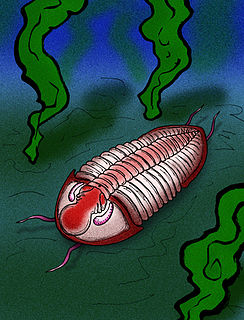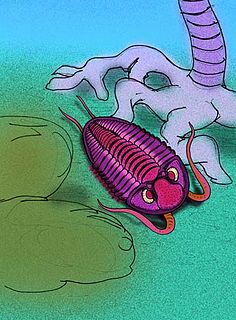 W
WCummingella is a genus of proetid trilobite in the family Phillipsiidae that lived from the earliest Carboniferous until the last species' extinction in the Middle Permian. Fossils have been found in corresponding marine strata of Western Europe, the United Kingdom and the United States.
 W
WEndops yanagisawai is a proetid trilobite belonging to the family Proetidae, endemic to Middle Permian-aged marine strata in Fukushima Prefecture, Japan. It was originally described by Riuji Endo as Paladin yanagisawai.
 W
WNipponaspis is a genus of proetid trilobite belonging to the family Phillipsiidae. Fossils of the various species are found in Middle Permian-aged marine strata of Fukushima Prefecture, Japan, China, Korea, and Alaska.
 W
WPhillipsiidae is a family of proetid trilobites, the various genera of which comprise some of the last of the trilobites, with a range that extended from the Kinderhookian epoch of the Lower Mississippian, to the end of Changhsingian age at Permian-Triassic extinction event in the latest Permian period.
 W
WProetidae is a family of proetid trilobites. The first species appeared in the Upper Ordovician, and the last genera survived until the Middle Permian. However, if the closely related family Phillipsiidae is actually a subfamily of Proetidae, then the proetids of Proetidae survive until the end of the Permian, where the last perish during the Permian–Triassic extinction event.
 W
WTriroetus is a genus of proetid trilobite found in Upper Carboniferous-aged marine strata in Russia, and Lower Permian-aged strata of Thailand, Malaysia, Spitzbergen, Yukon Territory, and Middle Permian-aged marine strata of Oman and Texas.
 W
WVidria vespa is a proetid trilobite belonging to the family Phillipsiidae. The fossils are found in Middle Permian-aged marine strata of Western Texas. It is unique among Permian-aged trilobites in having a posterior spine emanating from the pygidium of the adult.